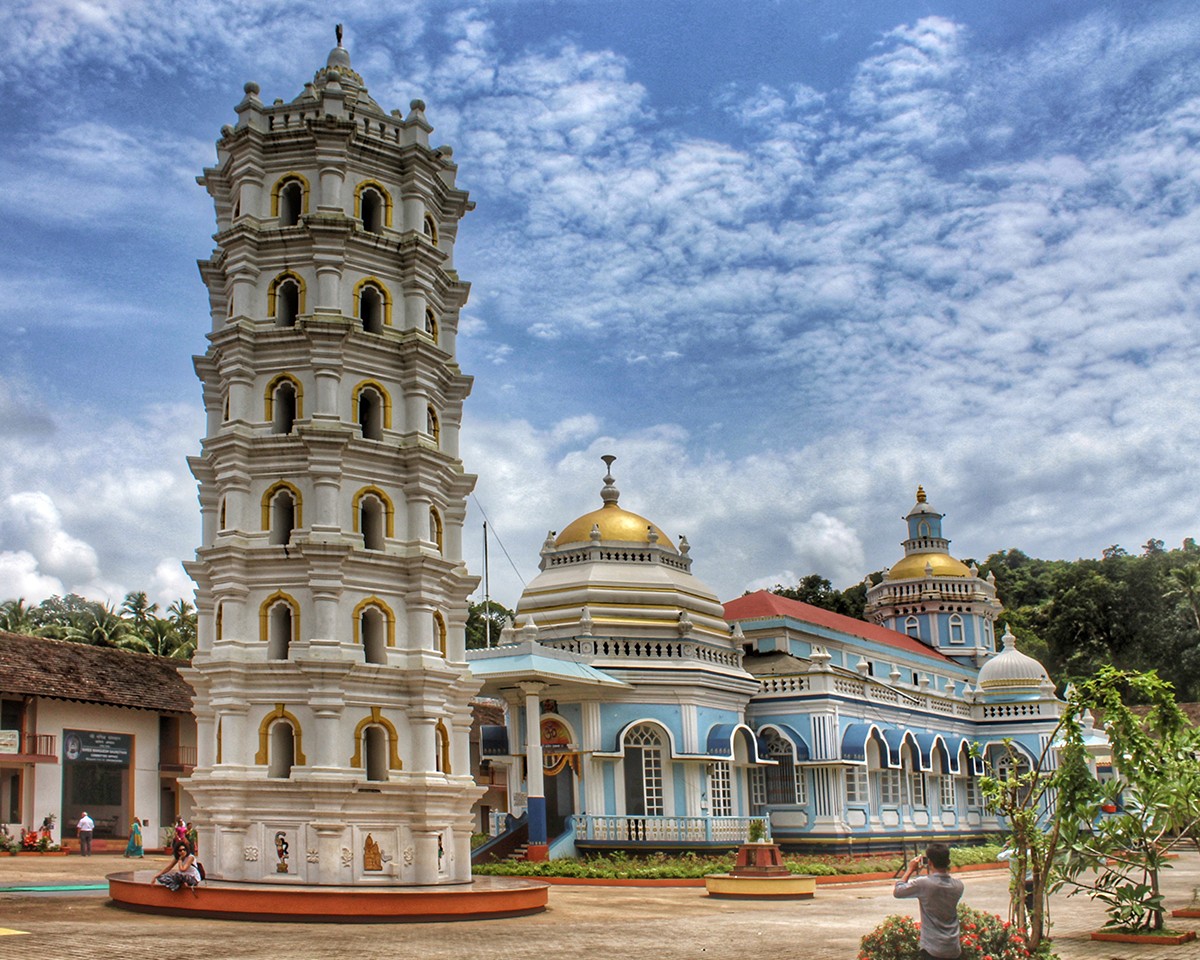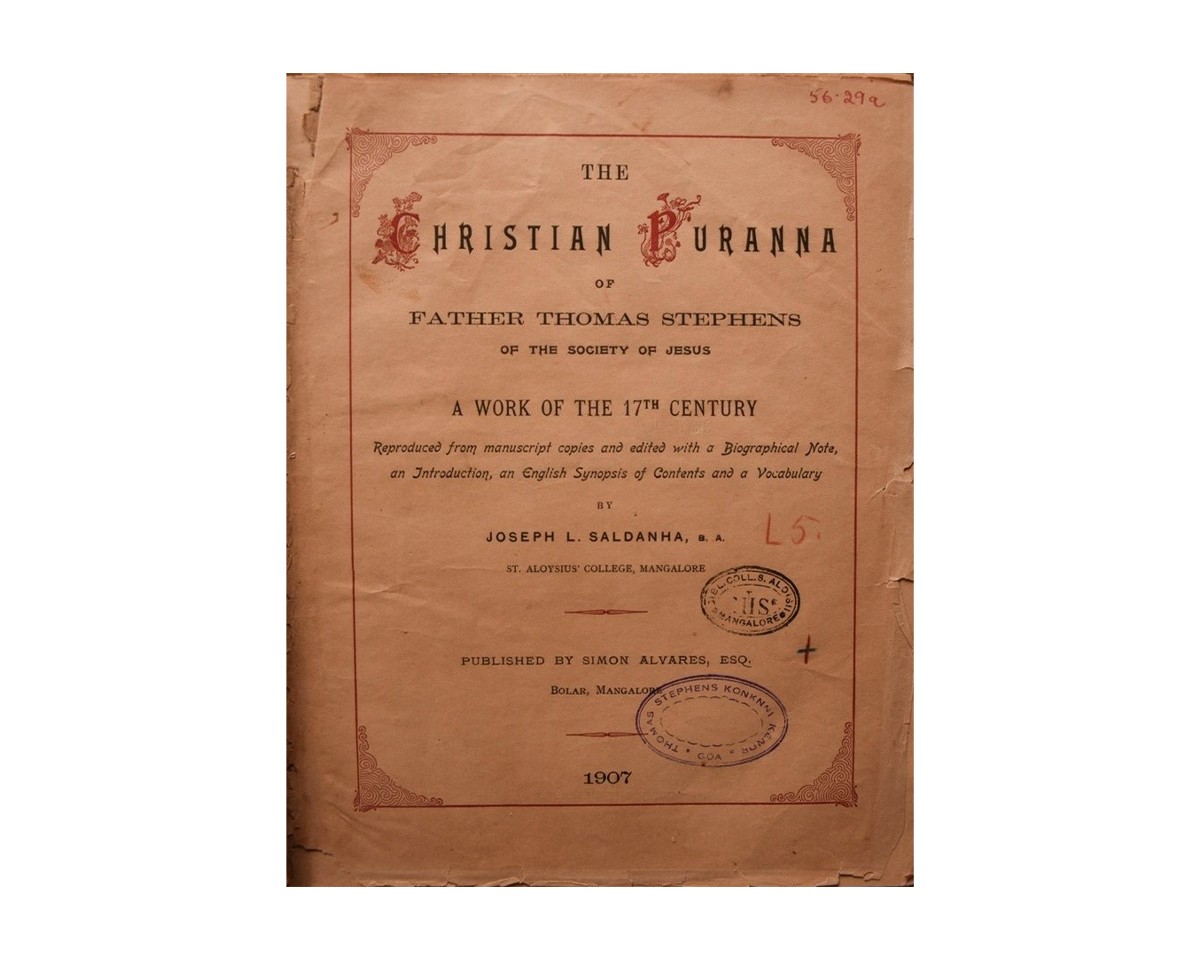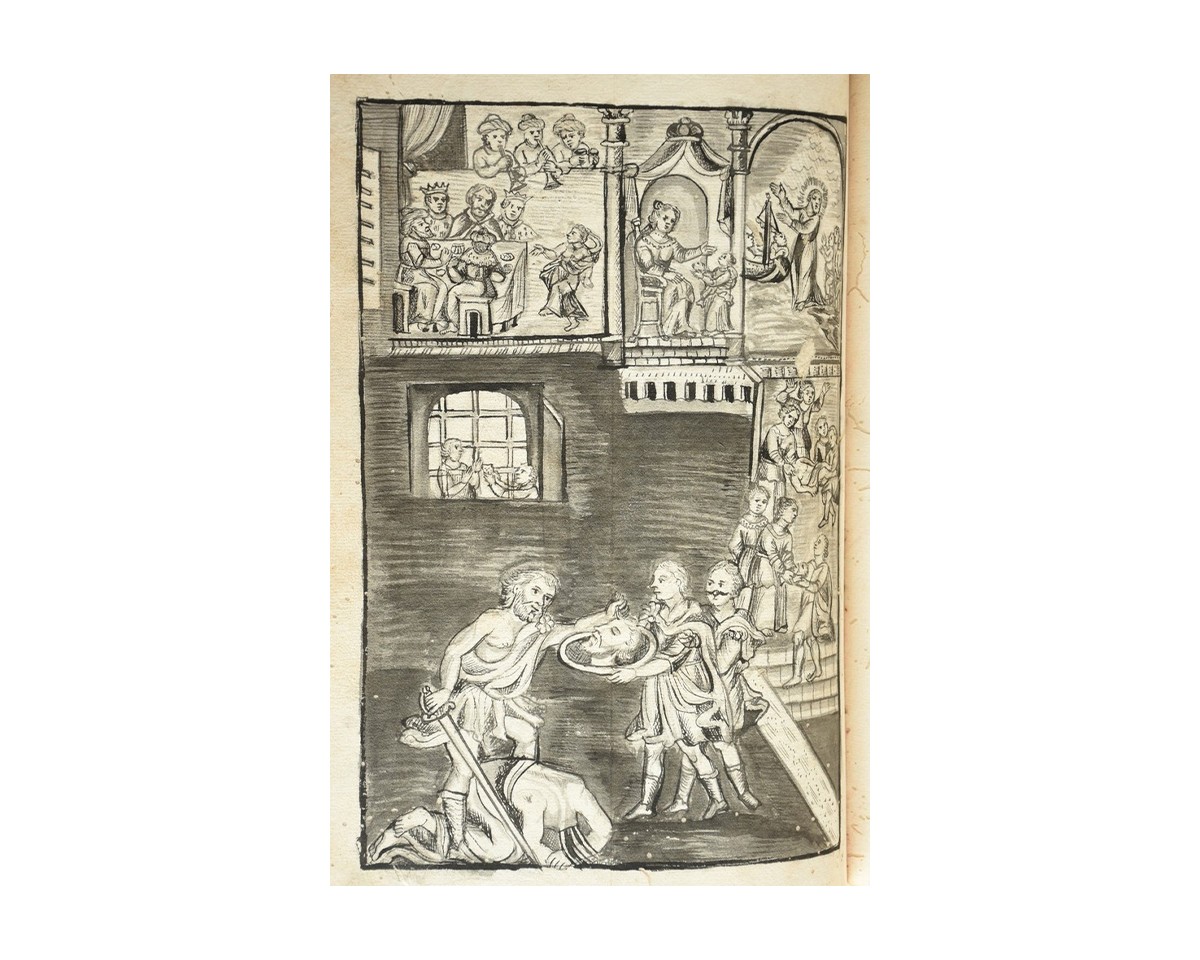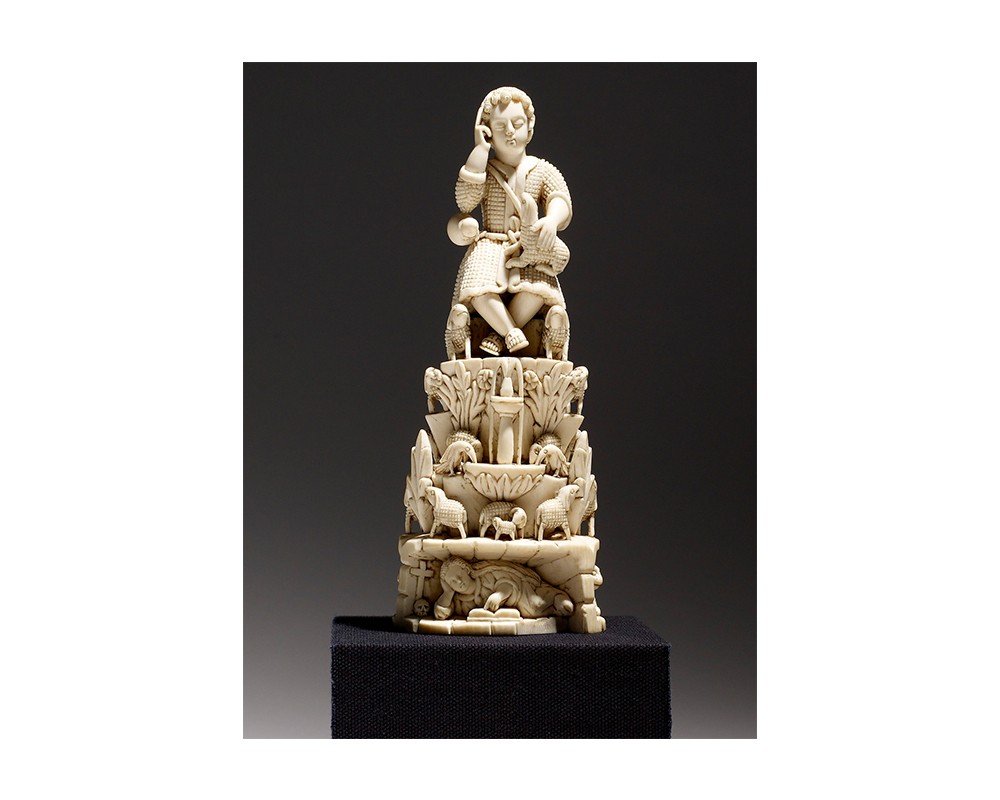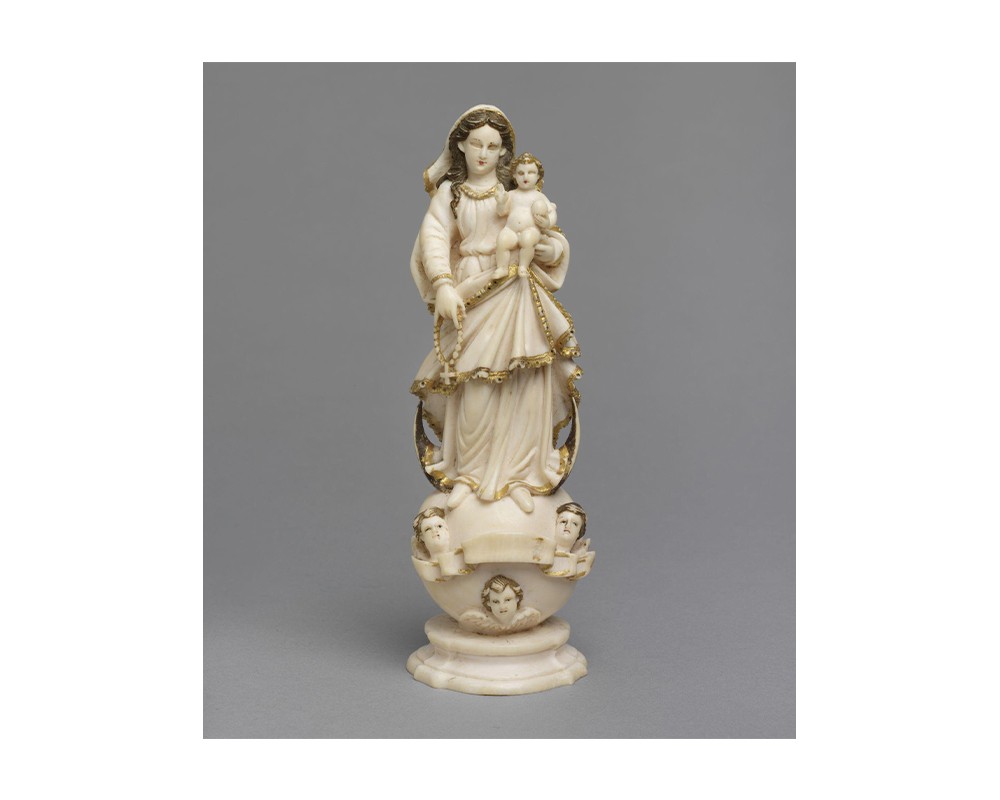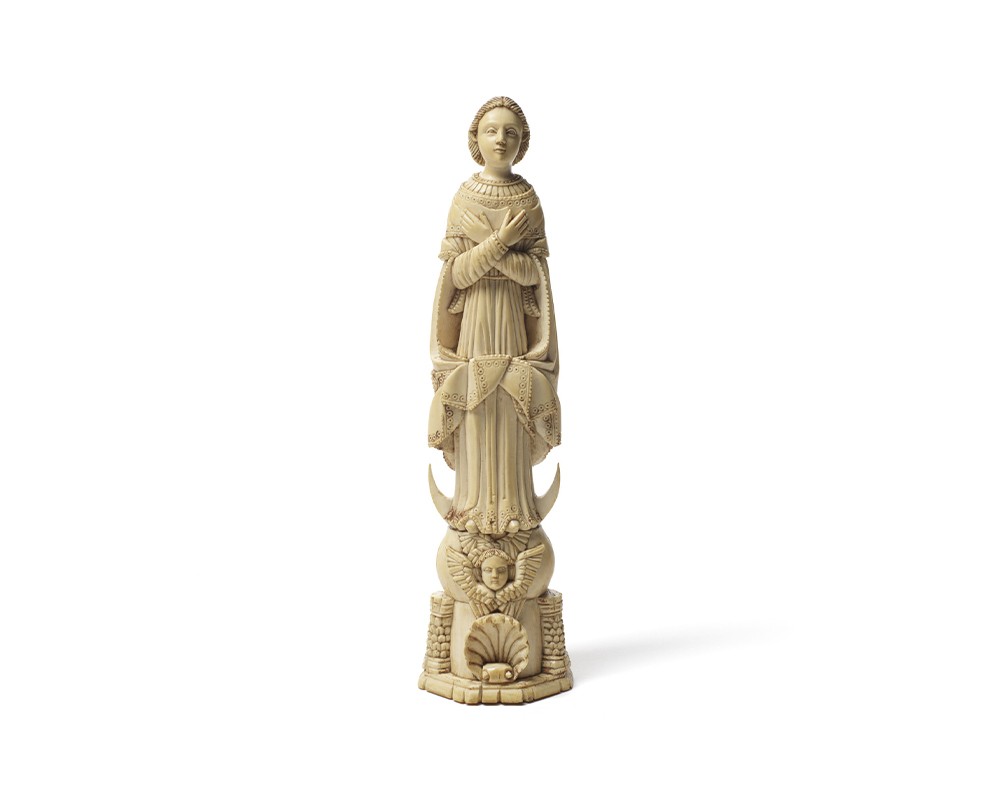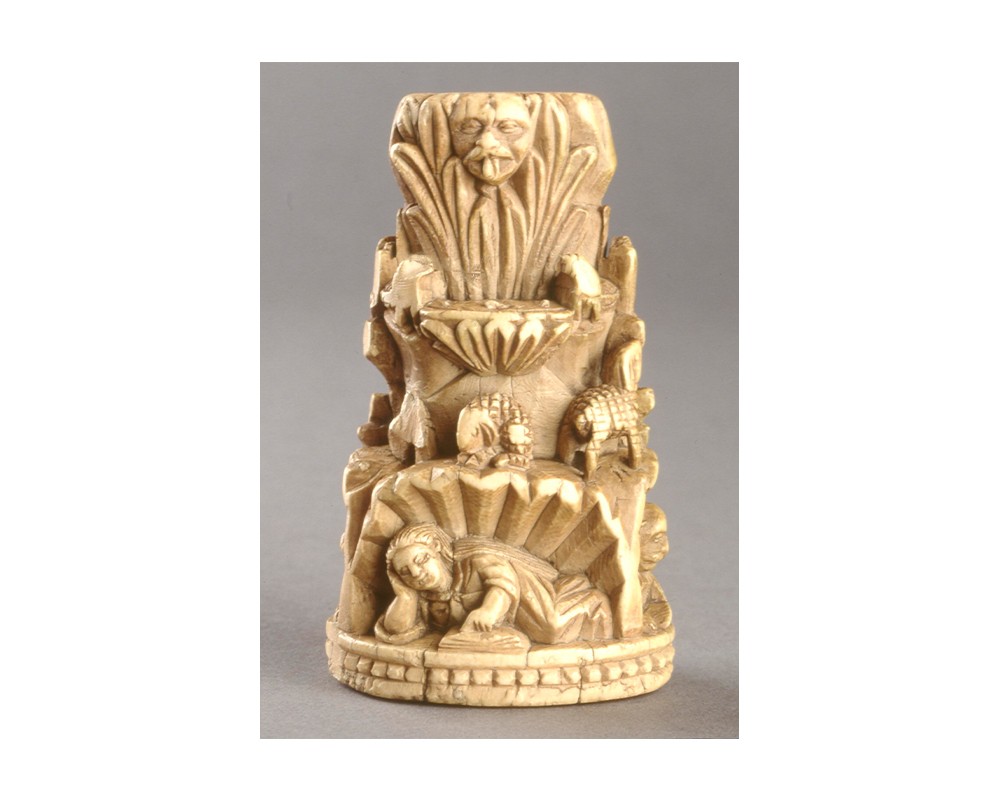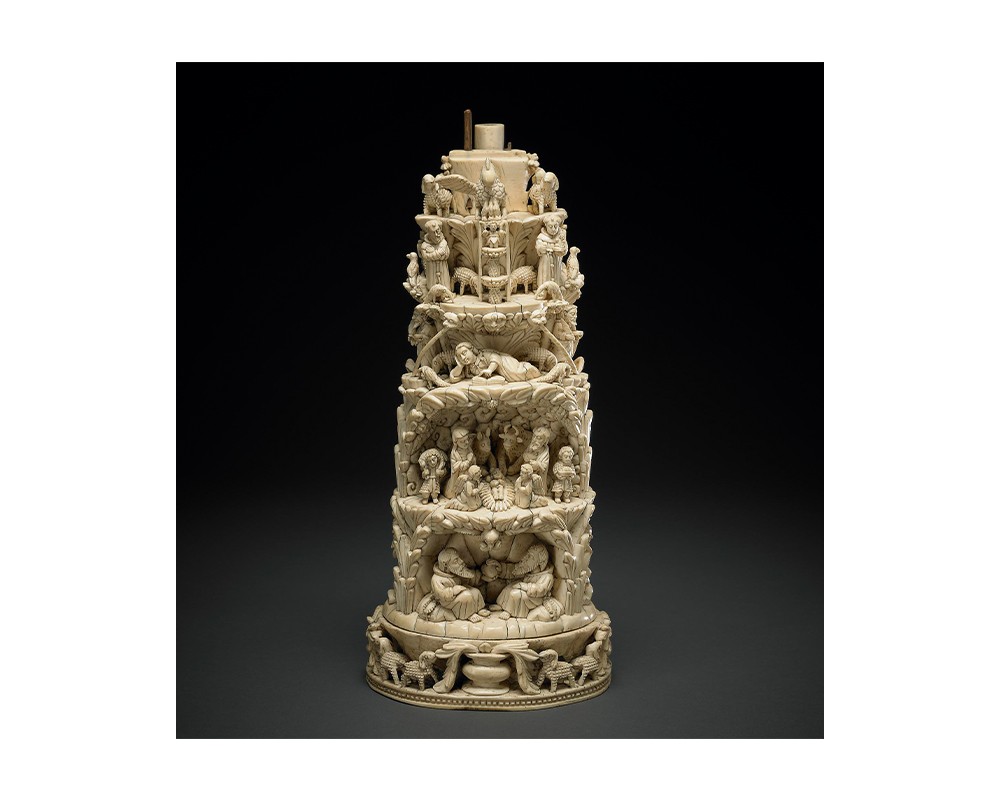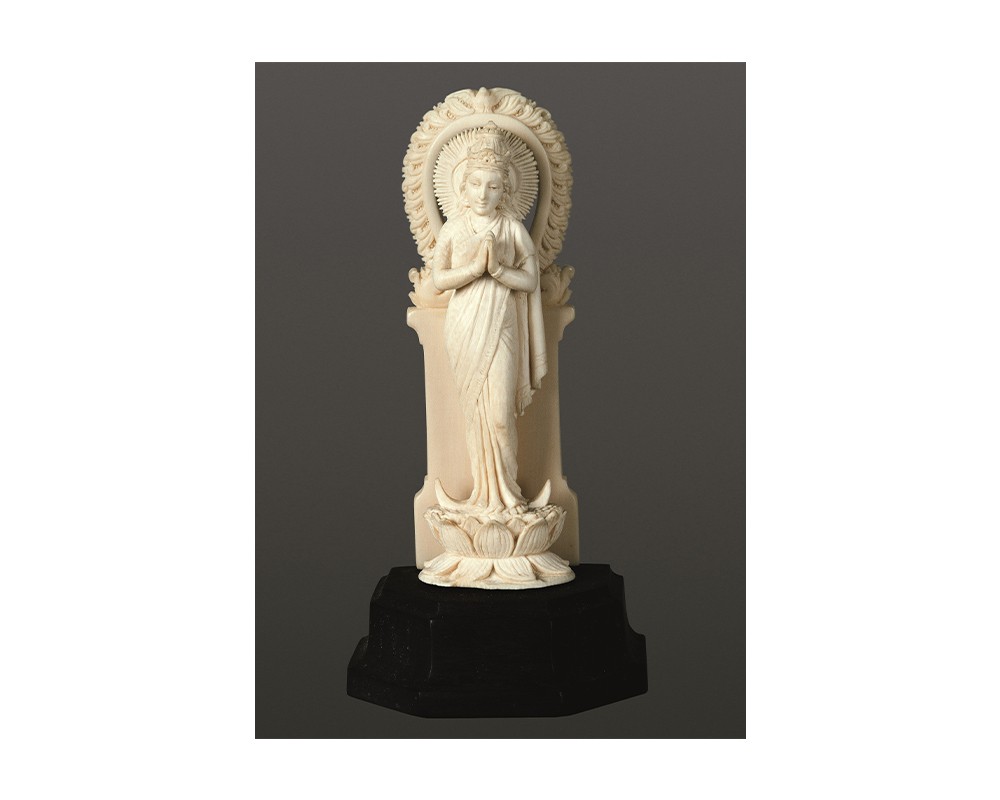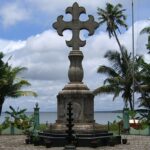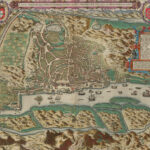Christianity is Integrated with Vernacular Traditions on the Konkan Coast
1550–1650
In the years following the collapse of the Vijayanagara empire and the Bijapur Sultanate, parts of their erstwhile Konkan territories (primarily in present-day Goa) are absorbed into Portuguese rule as the ‘New Conquests’. A group of seven new territories, they are composite spaces of culture, evident in structures like the Mangueshi Temple in its rebuilt form, which assimilates European and Islamic influences into elements such as the shape and layout of traditional Hindu temple spaces, the form of shikharas (tall, pyramidal superstructures) and Portuguese mansion interiors.
Architecture, most visible in the religious and domestic structures of Goa such as that of the Basilica of Bom Jesus, is not the only area in which Portuguese influence is spread. The emphasis on evangelism results in works like the Kristapurana, which retells the Biblical narrative in Marathi and Konkani in a Puranic style and is influenced by the linguistic style of the Marathi poet-saints. Religious rituals like the zagor (a Goan performance done for the local deity) become enshrined in both Hindu and Christian practices.
Missionary establishments become centres for the development of new styles of embroidery in the region. The hybridity in arts and crafts is also seen in wood and ivory carvings of religious icons made in Goa for the European market.
Bibliography
Henn, Alexander. Hindu-Catholic Encounters in Goa: Religion, Colonialism, and Modernity. Bloomington: Indiana University Press, 2014.
Royson, Annie Rachel. “Kristapurana: An Introduction.” Sahapedia. September 6, 2019. Accessed October 11, 2023. https://www.sahapedia.org/kristapurana-introduction.
Saraswati, Baidyanath. The Spectrum of the Sacred: Essays on the Religious Traditions of India. New Delhi: Concept, 1984.
Feedback 
This entry appears in
Art in South Asia
Visit Timeline
Associated Timeline Events
First Published: March 11, 2024
Last Updated: July 2, 2024



